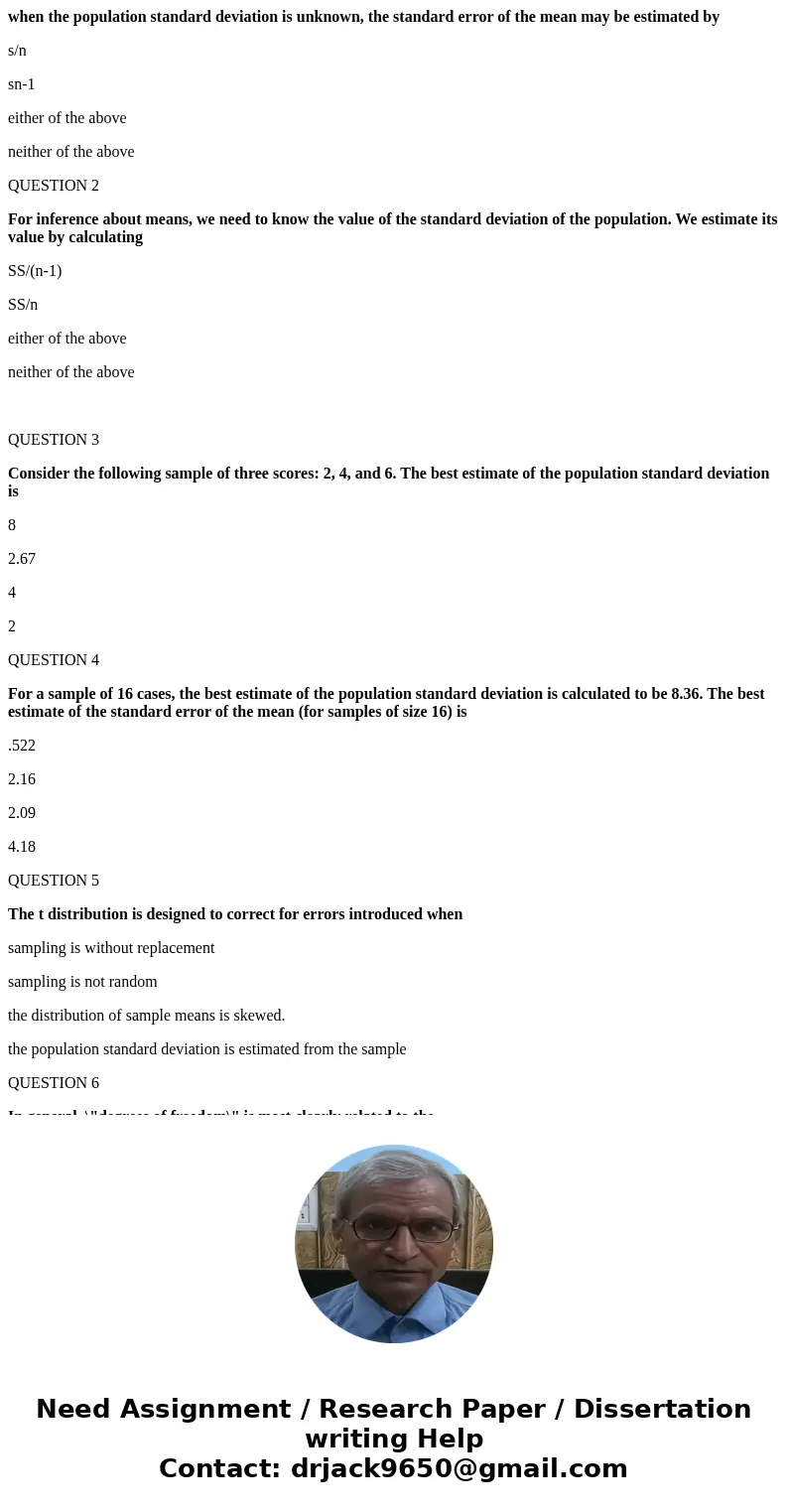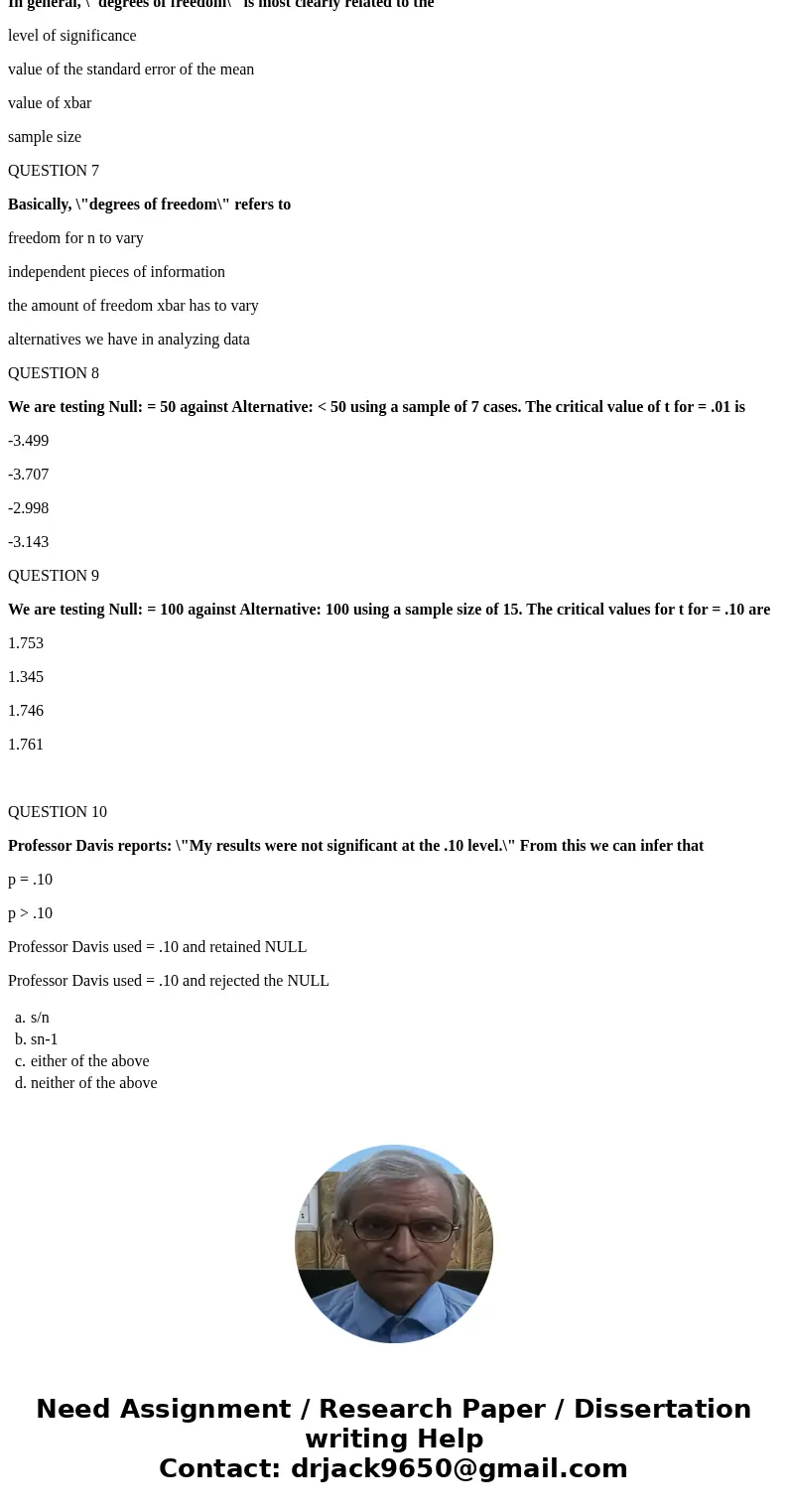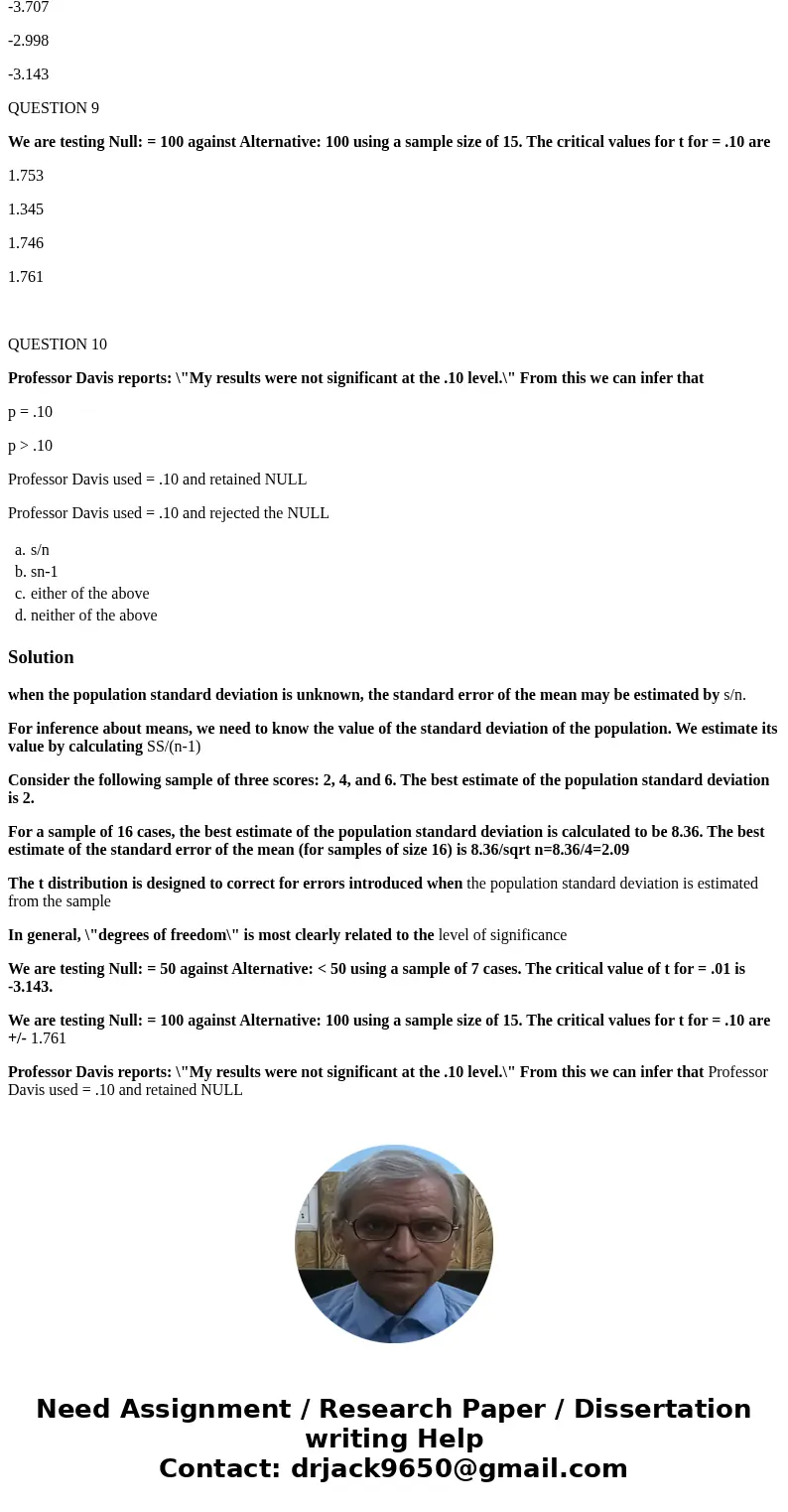when the population standard deviation is unknown the standa
when the population standard deviation is unknown, the standard error of the mean may be estimated by
s/n
sn-1
either of the above
neither of the above
QUESTION 2
For inference about means, we need to know the value of the standard deviation of the population. We estimate its value by calculating
SS/(n-1)
SS/n
either of the above
neither of the above
QUESTION 3
Consider the following sample of three scores: 2, 4, and 6. The best estimate of the population standard deviation is
8
2.67
4
2
QUESTION 4
For a sample of 16 cases, the best estimate of the population standard deviation is calculated to be 8.36. The best estimate of the standard error of the mean (for samples of size 16) is
.522
2.16
2.09
4.18
QUESTION 5
The t distribution is designed to correct for errors introduced when
sampling is without replacement
sampling is not random
the distribution of sample means is skewed.
the population standard deviation is estimated from the sample
QUESTION 6
In general, \"degrees of freedom\" is most clearly related to the
level of significance
value of the standard error of the mean
value of xbar
sample size
QUESTION 7
Basically, \"degrees of freedom\" refers to
freedom for n to vary
independent pieces of information
the amount of freedom xbar has to vary
alternatives we have in analyzing data
QUESTION 8
We are testing Null: = 50 against Alternative: < 50 using a sample of 7 cases. The critical value of t for = .01 is
-3.499
-3.707
-2.998
-3.143
QUESTION 9
We are testing Null: = 100 against Alternative: 100 using a sample size of 15. The critical values for t for = .10 are
1.753
1.345
1.746
1.761
QUESTION 10
Professor Davis reports: \"My results were not significant at the .10 level.\" From this we can infer that
p = .10
p > .10
Professor Davis used = .10 and retained NULL
Professor Davis used = .10 and rejected the NULL
| a. | s/n | |
| b. | sn-1 | |
| c. | either of the above | |
| d. | neither of the above |
Solution
when the population standard deviation is unknown, the standard error of the mean may be estimated by s/n.
For inference about means, we need to know the value of the standard deviation of the population. We estimate its value by calculating SS/(n-1)
Consider the following sample of three scores: 2, 4, and 6. The best estimate of the population standard deviation is 2.
For a sample of 16 cases, the best estimate of the population standard deviation is calculated to be 8.36. The best estimate of the standard error of the mean (for samples of size 16) is 8.36/sqrt n=8.36/4=2.09
The t distribution is designed to correct for errors introduced when the population standard deviation is estimated from the sample
In general, \"degrees of freedom\" is most clearly related to the level of significance
We are testing Null: = 50 against Alternative: < 50 using a sample of 7 cases. The critical value of t for = .01 is -3.143.
We are testing Null: = 100 against Alternative: 100 using a sample size of 15. The critical values for t for = .10 are +/- 1.761
Professor Davis reports: \"My results were not significant at the .10 level.\" From this we can infer that Professor Davis used = .10 and retained NULL



 Homework Sourse
Homework Sourse